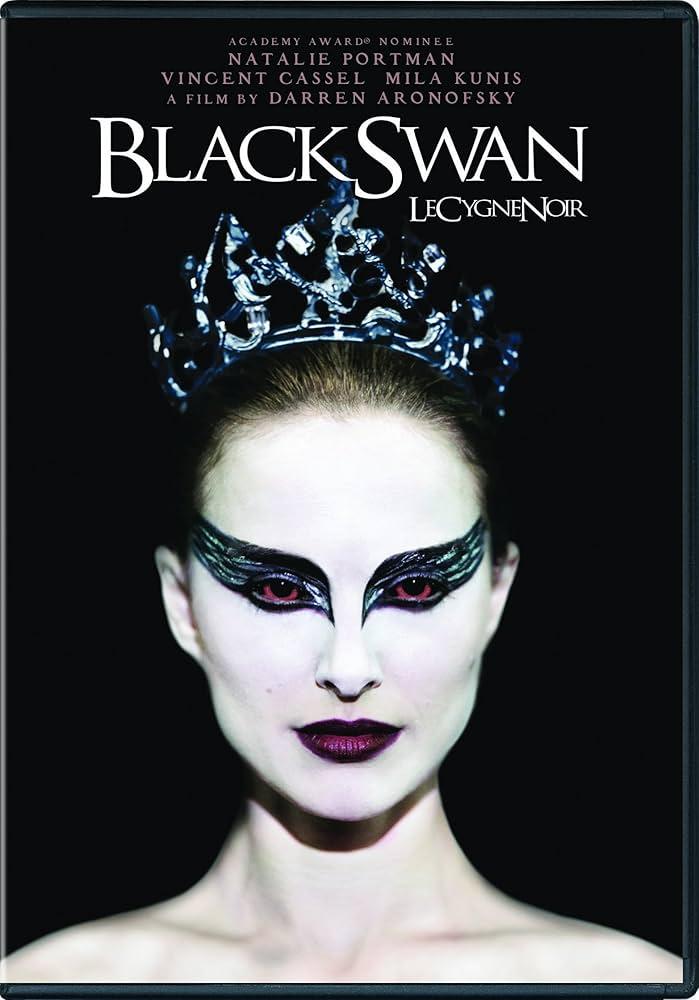“”
Darren Aronofsky’s “Black Swan” is a cinematic tour de force that delves into the intricate psychological landscape of its protagonist, Nina Sayers, a committed but fragile ballet dancer. This psychological thriller, set against the backdrop of the demanding world of professional ballet, is a compelling exploration of the human psyche, examining themes of identity, obsession, and the duality of human nature. Through its nuanced narrative and haunting visual aesthetics, “Black Swan” invites audiences to navigate the blurred boundaries between reality and delusion, sanity and madness. This article seeks to dissect the film’s psychological intricacies, shedding light on the underlying motivations and conflicts that drive Nina’s descent into psychological turmoil. By analyzing key scenes and character dynamics, we aim to uncover the layers of psychological depth that make “Black Swan” a resonant and thought-provoking masterpiece.
Character Duality and the Pursuit of Perfection
In Darren Aronofsky’s “Black Swan,” the exploration of character duality is masterfully intertwined with the relentless pursuit of perfection, presenting a psychological depth that is both captivating and unsettling. At the heart of the narrative is Nina Sayers, a ballerina whose quest to embody both the white and black swan roles in Tchaikovsky’s “Swan Lake” becomes a harrowing journey of self-discovery and destruction. This duality is depicted through Nina’s internal struggle between her innocent, controlled persona and the darker, uninhibited aspects of her psyche. Her transformation is not merely a physical metamorphosis but an unraveling of her mental state, where reality blurs with hallucination, illustrating the devastating effects of an obsessive desire for perfection.
The film’s portrayal of character duality is enhanced through several key elements:
- Mirrors: Symbolize self-reflection and the fractured identity, often used to depict Nina’s inner conflict.
- Doppelgänger Imagery: Represents the constant battle between her dual natures, where she sees her darker self manifesting in others.
- Contrasting Performances: The juxtaposition of her performances highlights the psychological tension between her two personas.
Through these techniques, “Black Swan” delves into the psychological torment of striving for perfection, ultimately questioning whether the pursuit is worth the potential cost of one’s sanity and identity. This duality serves as a poignant reminder of the human condition’s complexities, emphasizing the fragile line between ambition and obsession.

The Role of Hallucinations in Portraying Psychological Strain
In Black Swan, hallucinations serve as a profound narrative device to illustrate the protagonist’s psychological turmoil. As Nina’s obsession with perfection intensifies, her grip on reality weakens, manifesting through vivid and unsettling hallucinations. These experiences not only depict her internal conflict but also symbolize the pressures of the highly competitive ballet world. The film uses these hallucinations to blur the lines between reality and illusion, emphasizing the protagonist’s struggle with identity and the mounting pressure to embody both the White and Black Swan roles.
- Identity Crisis: Nina’s visions often revolve around her doppelgänger, symbolizing her fractured sense of self.
- Paranoia: Hallucinations of competitors and imagined injuries reflect her escalating anxiety and fear of failure.
- Metamorphosis: The transformation scenes illustrate her descent into madness, mirroring her loss of control.
Through these distorted perceptions, the film delves into the psychological strain of aspiring for perfection. Nina’s hallucinations are not mere figments of imagination but are deeply tied to her emotional state, revealing the destructive nature of her ambition. This portrayal invites the audience to explore the fine line between dedication and obsession, offering a chilling glimpse into the psyche of a performer under extreme pressure.

Symbolism and the Ballet World: A Reflection of Inner Turmoil
The world of ballet, with its ethereal grace and precision, serves as a profound backdrop for exploring the psychological complexities within the film “Black Swan.” At its core, the narrative delves into the dichotomy of light and darkness, using ballet as a metaphor for the inner turmoil experienced by the protagonist, Nina. The art form’s demand for perfection becomes a canvas for the symbolism of Nina’s struggle, mirroring the tension between her innocent, controlled persona and the untamed, chaotic depths of her psyche. This duality is masterfully captured through the contrasting roles of the White Swan and the Black Swan, each representing different facets of her identity.
Key elements in the film’s symbolism include:
- The Mirror: A recurring motif symbolizing self-reflection and fragmentation of identity.
- Feathers: Represent the transformation and shedding of innocence as Nina descends into madness.
- Lighting and Shadows: Used to illustrate the battle between light and dark within her soul.
These elements weave a narrative that not only portrays the external pressures of the ballet world but also reflects the internal conflicts that arise from the pursuit of unattainable ideals. In this way, “Black Swan” becomes an intricate exploration of the psychological labyrinth that is as much about the mind as it is about the art of ballet itself.

Understanding the Impact of Parental Pressure on Identity Formation
In Darren Aronofsky’s Black Swan, the theme of parental pressure is intricately woven into the fabric of the protagonist’s identity formation, casting a spotlight on the psychological complexities that arise from such dynamics. Nina Sayers, the film’s central character, is portrayed as a young ballerina striving for perfection, yet her journey is marred by the overbearing expectations of her mother, Erica. This pressure manifests in several ways, contributing to Nina’s internal conflict and her eventual psychological unraveling.
- Emotional Manipulation: Erica’s incessant control over Nina’s life, from her diet to her career choices, highlights the emotional manipulation often inherent in parental pressure. This manipulation fosters an environment where Nina’s sense of self becomes inextricably linked to her mother’s approval, leaving little room for personal autonomy.
- Identity Suppression: The pressure to conform to an idealized version of success suppresses Nina’s individuality, causing a rift between her authentic self and the persona she is coerced into adopting. This suppression is vividly illustrated through Nina’s descent into madness, symbolizing the destructive impact of an identity built on external validation rather than self-discovery.
By dissecting these elements, Black Swan offers a poignant commentary on how parental pressure can distort identity formation, underscoring the delicate balance required to nurture a healthy sense of self. The film serves as a compelling exploration of the psychological depth behind the seemingly singular pursuit of perfection, urging a reflection on the broader implications of parental influence in shaping one’s identity.
